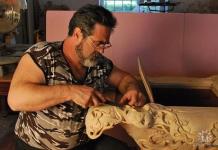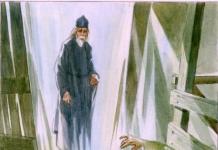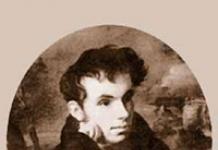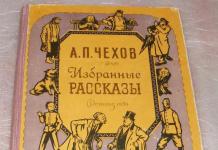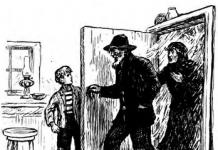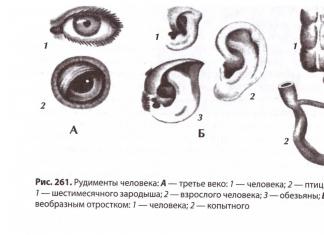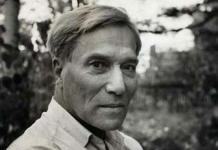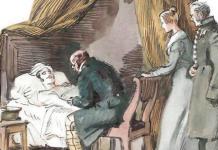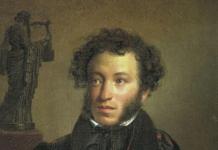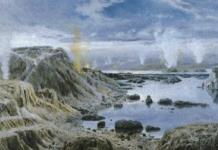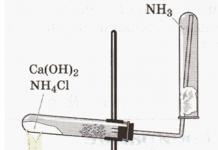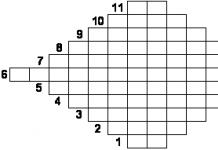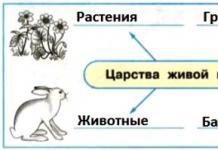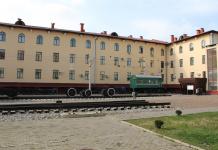road traffic: Movement is right-handed. Gasoline is cheap in Oman (about 25 cents per litre).

car rental: It makes sense to rent a car if you expect to travel around the country during the week. There are car rental desks in almost any hotel. Renting an economy class car (Hyundai Accent) will cost about $40 per day. To rent a car, you need at least one year of driving experience, a driver's license and a credit card.
Taxi: Taxis are ubiquitous in Oman. The fare must be agreed in advance.
buses: The main form of transport in the country is buses. There are buses quite modern, equipped with air conditioning.
hitch-hiking: airports: Oman's Seeb International Airport is located 40 km from the city centre.
airlines: Quite expensive a / k "Oman Air".
railway: The railway system is not very developed.
ports: Ports: Mina el Fal, Raisut and Matrah.
Details Category: Western Asian countries Published on 28.11.2013 15:10 Views: 3167What do we know about Oman? To be honest, not very many. However, we know that it was from Oman that Sinbad the Sailor set off on the legendary voyage.
Oman borders Saudi Arabia, the United Arab Emirates and Yemen.
It is washed by the waters of the Arabian Sea and the Gulf of Oman.
State symbols

Flag- consists of three equal horizontal stripes of white, red and green colors and a wider vertical red stripe on the left side of the flag.
In the upper left corner of the flag is the emblem of Oman: two crossed sabers with a khanjar, a traditional oriental dagger, superimposed on them. The flag was approved on December 17, 1970.

Coat of arms is the emblem of Oman. It consists of two crossed sabers in a sheath, blades down, with a sheathed khanjar superimposed on them, with details of belts.
The emblem is used as state symbol Oman from the middle of the XVIII century.
The modern state structure of Oman
Form of government- Sultanate.
head of state- Sultan. In the Koran in the first centuries of Islam, the word "sultan" denotes an abstract concept of power. Later, the term came to mean the sole representative of secular power, as opposed to the imam, the religious authority. But the Sultan of Oman concurrently is the spiritual head of the Ibadis - the Imam.

Sultan's residence
In Oman, the Council of State is appointed by the Sultan. The Council discusses five-year development plans, takes care of the environment. International affairs are entirely in the hands of the Sultan.
Official language
- Arabic.
Capital- Muscat.
The largest city- Muscat.
Territory- 309,500 km².
Climate- hot tropical. There are no permanent rivers in Oman. All rivers have only periodic flow, mainly in winter.

Population– 2,978,689 people About 80% of the population are Arabs. Indians, Balochs, Persians also live in port cities. In the southern region of Oman - Dhofar, a significant part of the population calls themselves "kara", they have pronounced negroid features, and their dialect is closer to the languages of Ethiopia.
Currency- Omani rial.
State religion- Islam of the Ibadi persuasion ( Ibadis- a branch of Islam that differs from both Sunnism and Shiism. Ibadism is often characterized as a moderate faction within the Kharijite movement, a religio-political group). Freedom of religion is guaranteed by law.
Administrative division– 11 governorates.
Economy- mainly based on oil exports. Industry: extraction and processing of oil, extraction and liquefaction of gas; construction, copper and steel smelting, chemical products, optical fiber. Agriculture
: dates, bananas, alfalfa, vegetables; camels, cattle; fishing. Export- oil, various re-exports, as well as fish, metals. Import- industrial equipment, vehicles, consumer goods, food.
Education- Free and public. There are 1,125 schools in Oman at various levels providing public education about 550 thousand students, and private - 24 thousand.

Students of the Technical College
the first higher educational institution became the Technical College, then the University was opened. Sultan Qaboos. There are 6 colleges of education, 4 specialized institutes (medical, financial, etc.), 5 technical institutes and 7 Islamic colleges.
Sport– of course, football. Athletics and shooting are also popular. Oman has participated in 7 Summer Olympic Games. Exotic sports such as falconry, dune riding, and camel racing are also popular in the country.

camel racing
And the most common types of recreation in Oman are scuba diving, motorsport and karting.
culture
The country retains a traditional way of life, despite the apparent outward civility. In rural areas, the way of life has not changed for almost centuries. Men here often wear bright blue, loose, long shirts called "dishdashas", often wear a curved knife - "khanjar" on their waists. The women don't wear simple black robes, but bright patterned dresses adorned with even more colorful capes and shawls.

Omanis wear a colored scarf (masar or musar) around their heads. And under the scarf they have a very pretty little hat (kimma), similar to a skullcap. They say that handmade hats have no repetitions, everyone is individual. In ordinary life, Omani men and boys wear only hats.
Omani women, like all Muslim women, walk with their heads covered (likhaf - headscarf) and are dressed in loose-fitting dishdashi. Provincial women often wear bright, colorful shawls and dresses, and rarely cover their faces completely.

Saved here traditional views art, dance and music. Oman is famous for its silver weapons and jewelry.
National dishes are Indian-style dishes with curry (a mixture of spices based on turmeric root).
The traditional occupation is irrigated oasis and terrace plowed agriculture. Date palm, fodder grasses, lemons and other citrus fruits, apples, mangoes, pomegranates, bananas, garden and melon crops are grown; from cereals - barley, wheat, corn.
About 15% of the Omanis are Bedouin nomads and semi-nomads engaged in transhumance cattle breeding (sheep, goats, camels) in combination with agriculture and fishing or with seasonal agricultural work.

Bedouin - "inhabitant of the desert (steppe)", "nomad" - this term refers to all the inhabitants of the Arab world who lead a nomadic lifestyle, regardless of their nationality or religious affiliation.
Dried sardines are often used as fodder for livestock and fertilizer for crops. Camel breeding is in decline. Fishing, sea crafts, pearl mining are developed.
Crafts: jewelry, pottery, wood carving, weaving from palm leaves and fibers, leather goods, weaving.
Nature
Flora
The vegetation of Oman is poor. In the mountains there are groves of tamarisk, fig tree, plane tree and oak, but their total area is insignificant. There are savannahs in the foothills. There are palm groves on the north and south coasts.

Tamarisk - small trees and shrubs. sand-fixing plants
In the middle part of Oman is a desert; there are areas completely devoid of any vegetation.
Fauna
The fauna of Oman is more diverse. Lots of sand gazelles and rodents.

sand gazelle
Predators live: striped hyena, jackal, fox.

striped hyena
Lots of birds. Reptiles are numerous: agamas, foot-and-mouth disease, geckos, chameleons, as well as arachnids - phalanges, scorpions.
UNESCO World Heritage Sites in Oman
Bahla fortress

Medieval citadel in the city of Bahla, in the lower part of the Jebel Akhdar highlands. Considered the oldest fortress in Oman. Erected from adobe in the XIII-XIV centuries. Surrounded by a 12 km wall.
Archaeological site of Bath

The buildings were built in the 3rd century. BC.
earth incense

Territory in Oman, located on the path of incense. The frankincense trees in the Wadi Dawkah oasis and the remains of the Shist-Vubar oasis, through which the caravan route passed, as well as the ports of Khor-Rori and Al-Balid clearly demonstrate how the frankincense trade flourished in this region for many centuries. Frankincense was one of the most important commodities in the ancient and medieval world.
Aflaj irrigation systems

Aflaj irrigation systems include 5 aflaj irrigation systems, representing about 3,000 such systems in use in Oman. The origin of this method of irrigation dates back to 500 AD. e., but archaeological evidence shows that irrigation systems existed here as early as 2500 BC.
"Aflaj" - plural from "falaj", which means: to divide into parts and evenly distribute limited resources, this is the specificity of irrigation systems. Water from underground sources or springs is directed under the influence of gravity. The fair distribution of water in villages and cities is maintained through the preservation of intercommunal ties, respect for traditional values and is based on astronomical observations.
Other sights of Oman
Jebel Akhdar mountains
The highest point is Jebel Shams (mountain of the sun), about 3000 m. This is the highest point in Oman and all of Eastern Arabia.
It is mostly desert, but shrubs and trees grow at high altitudes, and even agriculture is carried out: pomegranate, apricot, peach and walnut are grown.

Terraces of Jebel Akhdar
Sultan Qaboos Grand Mosque

The main mosque of the Sultanate. Built in 2001 from 300,000 tons of Indian sandstone. The main feature of the interior design is the prayer carpet that covers the floor of the prayer hall. It weighs 21 tons and was woven for 4 years. The carpet covers an area of 4343 square meters. m.

Nizwa fort
Massive castle in Nizwa. It was built in the 1650s, although its main structure dates back to the 12th century. It is the most visited national monument in Oman. The fort was an administrative building for government officials and imams. It is a powerful reminder of the significance of the city in turbulent times. long history Oman. It was a formidable bulwark against invaders who wished to seize the abundant natural wealth of Nizwa and take possession of the strategic crossroads of life.

Two guns guard the entrance to the fort, which opens up a labyrinth of high-ceilinged rooms, halls, doorways, terraces, narrow staircases, and corridors. 4 guns remained at the top of the tower (instead of the former 24).
Omani-French Museum

Located in the former residence of the French consul. In 1992, Sultan Qaboos bin Said and the late French President François Mitterrand created a museum in the palace to preserve the history of Omani-French relations. The museum has a large collection of exhibits, including photographs of French diplomats, historical documents, Omani-French ships, costumes, jewelry and furniture.
Children's Museum (Muscat)

Opened in 1990. The museum has many practical displays: artificial electricity, which causes lightning, launching a balloon, photographing one's own shadow, and more. There is also a display called "Eye Spy" that gives the illusion of imagining how our eyes and brain see things differently.
Resorts of Oman
Tourism in Oman is developing intensively. Oman is recognized as one of the most environmentally friendly countries in the world. The nature of the country is fascinating: deserts with dunes of red and white sand, oases immersed in the greenery of palm trees, majestic mountains with picturesque deep gorges.
One of the resorts Al Sawadi, the famous beach town of Oman, located 90 km from Muscat in a quiet secluded place between huge gardens on the one hand and a beach of unique beauty, washed by the azure waters of the Indian Ocean, on the other.

Al Sawadi Resort
On the sandy beaches of Savadi Beach, in addition to the sun and the ocean, you can find many interesting activities: jet skis and skis, catamarans and windsurfing. Here you can go scuba diving and enjoy the beauty of the underwater world of the Indian Ocean. You can go on boats to the islands located near the coast.
Al Sawadi impresses not only with white sand beaches and gentle waves of the Indian Ocean, but also with amazing modern facilities: the city has turned into a modern resort with magnificent roads, modern buildings, sports facilities and upscale hotels.

History
The pre-Arab population of Oman was, according to historians, proto-Australian. In the 1st century BC e. The Arabized Kushite Yamani tribe moved to Oman from Yemen and conquered the local tribes. In the VI century. n. e. Oman was plundered by the Sassanid troops, and also devastated by the raids of neighboring Bedouin tribes.
In the 7th century Oman was included in the Arab Caliphate, which accelerated the development of feudal relations. The population was Islamized. In the ninth century Oman was re-conquered by the caliphs of the Abbasid dynasty. Their dominion continued until the 11th century, when the dynasty of sheikhs of the Nabhan tribe came to power.
In the XVI-XVII centuries. Oman was under the rule of the Portuguese, and only in 1650 they were expelled.

IN early XVIII in. Oman was conquered by the Persians, but in 1741 they were expelled by the ruler Ahmed Zafari, who created a large pirate state, which, in addition to Oman, covered the islands of the Persian Gulf, most of the coast of present-day Iran and the coast of East Africa from Somalia to Mozambique and many adjacent islands.
In 1832, the residence of the Sultan of Oman was transferred to the island of Zanzibar, and in 1856 the state was divided between the two sons of the Sultan Said ibn Sultan into two independent parts: African and Asian. In the second half of the XIX century. they accepted the protectorate of Britain (separately).
In 1938, the new Sultan Said bin Taimur came to power. At first, most tribal sheikhs sympathized not with the pro-English Sultanate of Muscat, but with the Imamate of Oman, where Mohammed al-Khalili was in power. But after the Second World War in Muscat, most of the sheikhs spoke in favor of entering under the auspices of Said bin Teimur. On July 23, 1970, as a result of a bloodless coup, Said was overthrown by his son Qaboos, who began the modernization of the Omani economy and abolished social restrictions. In 1987, Oman was opened to tourism.

Oman- a state in Western Asia, in the southeast of the Arabian Peninsula. It borders Saudi Arabia, the United Arab Emirates and Yemen. It is washed by the waters of the Arabian Sea and the Gulf of Oman. To the north of the main part there is a small semi-exclave of Musandam and its full exclave of Madha (one of the vilayets of Musandam), separated from the main territory of Oman by the territory of the United Arab Emirates. In the middle part of Oman there is a desert, there are areas completely devoid of any vegetation.



State of Oman on the map



Oman is one of the safest countries in the world
There are few rich Omanis, and many of them do not disdain to work in any job - drivers, taxi drivers, tankers, etc. Many women in Oman work. There are even female police officers. Three ministries are headed by women. In general, in contrast to the same Egypt, here the attitude towards a woman is very calm and respectful. You will never see how an Omani will shout after a European: “Natasha! Natasha! or in every possible way to annoy her with harassment. The country is ruled by a sultan, who is very much loved here. Everyone has his photos on their mobile phones and desktops. The Sultan managed to pull the country out of the Middle Ages. Even 40 years ago in Oman there were no schools, hospitals, the opportunity to travel abroad, everyone lived in poverty.
The average salary in Oman is $2,000 per month. There is practically no support from the state, not like in the Emirates. A family with 3 racing camels is already considered rich, despite the fact that a camel costs from 10 thousand euros. Education and medicine in the country are free. Half of the country's population is under the age of 18. Families are very large, up to 35 children in a family from 4 wives. On average, there are 5-6 children in a family. The groom must pay 10 thousand euros to her parents for the bride. Divorces are allowed and their percentage has recently been increasing. Women get married on average at 25 years old.
Oman what to see

















Oman is a state in Southwest Asia, in the southeast of the Arabian Peninsula. It borders Saudi Arabia, the United Arab Emirates and Yemen. It is washed by the waters of the Arabian Sea and the Gulf of Oman. The enclaves of Madha and the Musandam peninsula are separated from the mainland of Oman and border, respectively, the United Arab Emirates and Iran (along the Strait of Hormuz). The territory of Oman - 309500 sq. km.
In the north-east of the country, along the coast of the Gulf of Oman, the coastal plain of El-Batin stretches in a narrow strip, the most developed and densely populated part of the country. A vast expanse to the west of this plain is occupied by the mountains of El-Hajar-el-Gharbi. Some peaks reach 3000 m (the highest point is 3353 m). In the middle part of the country there is a low plateau, largely covered with sand. Its average height is 500 m. In the southern part of the country, Dhofar, mountains rise, the highest near the southern coast - up to 1678 m.
Capital of Oman- Muscat.
Climate and nature of Oman
The climate in Oman is tropical and hot. The average temperature in June in the country's capital, Muscat, is + 32°, in January the average temperature is not less than + 20°. The annual amount of precipitation in mountainous regions is no more than 500 mm, and in other regions - from 60 to 130 mm per year, and there it usually rains only a few days a year.
There are no permanent rivers in Oman. All rivers have only periodic flow, mainly in winter.
The vegetation is poor. In the mountains there are groves of tamarisk, fig, sycamore and oak, but their total area is small. There are savannahs in the foothills. There are palm groves on the north and south coasts.
In the middle part of Oman there is a desert, there are areas completely devoid of any vegetation.
The animal world is quite diverse. Lots of sand gazelles and rodents. Predators live - striped hyena, jackal, fox. Lots of birds. Reptiles are very numerous - agamas, foot-and-mouth disease, geckos, chameleons, as well as arachnids - phalanges, scorpions.
 Oman's form of government- monarchy (sultanate).
Oman's form of government- monarchy (sultanate).
The head of state is Sultan Qaboos bin Said al-Said. The country's highest advisory body is the Council of Oman, consisting of two chambers - the Majlis al-Shura (Council of Tribes, 83 deputies from the districts) and the Majlis al-Dawla ( State Council, 48 members are appointed by the Sultan).
Administrative division: 8 provinces, which are divided into 59 wilayas (districts).
Economy of Oman based on oil exports. In view of the decrease in oil reserves, the Omani authorities plan to diversify the economy - to develop gas production, the metallurgical industry and the tourism business.
A Brief History of Oman
The first settlements on the territory of Oman appeared in the 3rd millennium BC. In the 1st millennium BC. e. The Yamani tribe moved to Oman from Yemen and conquered the local tribes. In the 6th century A.D. e. Oman was plundered by the Sassanid troops, and also devastated by the raids of neighboring Bedouin tribes.
In the 7th century, Oman was included in the Arab Caliphate, which accelerated the development of feudal relations. The population was Islamized. In the middle of the 8th century, this region became independent, under the rule of local imams, but after a century and a half, Oman was again conquered by the caliphs from the Abbasid dynasty. Their dominion continued until the 11th century, when the dynasty of sheikhs of the Nabhan tribe came to power.
In the 16th and 17th centuries, Oman was under the rule of the Portuguese, and only in 1650 they were expelled.
 At the beginning of the 18th century, Oman was conquered by the Persians, but in 1741 the Persians were expelled by the ruler Ahmed Zafari, who created a large pirate state, which, in addition to Oman proper, covered the islands of the Persian Gulf, most of the coast of present-day Iran and the coast of East Africa from Somalia up to and including Mozambique, as well as many adjacent islands.
At the beginning of the 18th century, Oman was conquered by the Persians, but in 1741 the Persians were expelled by the ruler Ahmed Zafari, who created a large pirate state, which, in addition to Oman proper, covered the islands of the Persian Gulf, most of the coast of present-day Iran and the coast of East Africa from Somalia up to and including Mozambique, as well as many adjacent islands.
In 1832, the residence of the Sultan of Oman was transferred to the island of Zanzibar, and in 1856, after the death of the then Sultan, the state was divided between his two sons into two independent parts - African and Asian. In the second half of the 19th century, they accepted the protectorate of Britain (separately).
In 1938, the new Sultan Said bin Taimur came to power. In 1970, Said was overthrown by his son Qaboos in a bloodless coup. He quickly began modernizing the Omani economy and abolished social restrictions. In 1987, Oman was opened to tourism.
Currency- Omani rial (international designation - OMR), equal to 1000 beys. In circulation there are banknotes of 100 and 200 beis, 0.25, 0.5 1, 5, 10 and 50 rials, as well as coins of 5, 10, 25, 50 and 100 beis.
 Banks and currency exchange
Banks and currency exchange
Open from Wednesday to Saturday from 8.00 to 12.00, on Thursday - from 8.00 to 11.00. Exchange offices are open on the same days from 8.00-9.00 to 13.00, and from 15.00 to 20.00 (some are open until 21.00 and later). Friday is a non-working day in all organizations.
Currency can be exchanged at banks (quite a long procedure) and specialized exchange offices. In some private stores, you can also pay directly with hard currency (US dollars and UAE dirhams are especially readily accepted), but the exchange rate is rounded in favor of the seller.
Credit cards of the leading payment systems are accepted everywhere, but preference, especially in the provinces, is given to cards of local banks (primarily "Bank of Muscat"). ATMs are located everywhere, but most of them serve only cards of local banks. Traveler's checks can be cashed at major bank offices and most hotels.
The shops
Open from Wednesday to Saturday from 8.00 to 12.00, on Thursday - from 8.00 to 11.00. Markets are open from 8.00 to 12.00, some continue to work in the evening, from 16.00-16.30 to 19.00-20.00. Friday is a non-working day.
Official language- Arabic. IN everyday communication local dialects of the Arabic language are used, which are quite different both from literary Arabic and from each other.
Population
The population is 3.3 million.
About 80% of the population of Oman are Arabs. They are divided into two groups - the Arab-ariba ("pure-blooded Arabs"), which include the descendants of the tribes that came in ancient times from Yemen, and the musta-ariba ("mixed Arabs"). On the coast of Oman, the Arab population has largely mixed with African slaves and freedmen, as a result, a significant Negroid admixture is noticeable, there are many mulattos. In the port cities of Oman, Indians, Balochs, and Persians also live. In the southern region of Oman - Dhofar, a significant part of the population calls themselves "Kara", they have pronounced Negroid features, and their dialect is closer to the languages of Ethiopia than to Arabic.
Up to 700 thousand foreigners live and work in the country (mainly citizens of India, Pakistan, Sri Lanka and the Philippines), who are not citizens of Oman.
Religion
Ibadhi Muslims - 75%, Sunnis. Due to the fact that a significant part of the population is foreigners, there are many followers of other religions in the country, while freedom of religion is guaranteed by law.
Time
1 hour ahead of Moscow.
Cuisine of Oman
The national cuisine of Oman depends entirely on the natural and climatic conditions of the region, and therefore is quite simple. Having lived in extremely poor conditions for many centuries, the Omanis have created a rather distinctive culinary tradition in which the limited range of products is compensated by an abundance of spices and a variety of cooking methods. However, recently, when the issue of food was resolved through imports, a variety of European and Asian food products organically fit into the local tradition.
The basis is meat, primarily lamb, although recently beef has been increasingly used. Traditionally popular are ram "shua" roasted whole on coals in a pit, minced meat "makadid", meat roasted on stones "al-mudbi", meat roasted on coals "lyakhm meshhui", meat roasted on a spit "mishkak" (or "mashakik" ), pieces of “buryani” bread mixed with meat or fish, lamb or goat meat with “uzi” rice, all kinds of fried and baked chicken meat, “lyakhm nashif” meat stewed with tomatoes, onions and spices, rice with meat “lyakham kabuli” and etc. The meat is usually served with vegetable sauce "saluna", pods of the same name shrub "okra" stewed with tomato, boiled lentils with tomato paste "dal", white peas "dengu", crushed barley with curry "jarish", stewed vegetables "fatta", fried onion and rice. And, of course, the famous Omani spices are used everywhere, ranging from the rather traditional saffron and cardamom to the exotic "zaatar" or "laymun gaff".
Everywhere (especially in the south) fish is used - whole chargrilled "samak meshui", fish with vegetable sauce "salyunat samak", dried shark meat "uaal" and soup from it - "shorbat uaal", dried fish "laham" and various seafood. The fish is usually served with a fijl vegetable salad, a kind of lemon juice and mausura onion sauce, and boiled rice. An increasing number of dishes from other countries, such as hummus, shish kebab, tikka, mutabbal or spaghetti, are gaining popularity in local restaurants.
Khubz bread occupies a special place on the Omani table. There are dozens of varieties of it here - traditional round bread "rkhal", thin large flatbreads "khubz tannur", huge holiday flatbreads "kram", Arabic "khubz libnani" and unleavened Indian "khubz Hindi", pita bread "tannur" and "burata" - all they are used in the meal in large quantities. Original sandwiches with fish or chicken are made from bread, it is used as a spoon for gravy, and also as a basis for various sweets - soaked in honey or wrapped in sugared fruits. Also popular among the sweets are candied dates "tamar", halva "halua" (quite different from the usual halva), "habisa", soft gozinaki "shuffling" and "shuffling sabal", etc.
The traditional drink is coffee ("cahua"). Coffee is usually served in small cups very strongly brewed, without sugar, but with the addition of cardamom, ground date seeds or a drop of rose water. Tea ("shai") is no less popular than coffee, and here it is drunk with milk ("shai bil khalib"), with mint ("shai bi naa"), with rose water ("shai bi maal-ward") or with ginger ("shai bi zinjibil").
Alcohol practically not used. Although its sale is limited only by licenses (available in large hotels and expensive restaurants), the Omanis themselves drink very little alcohol.
Visa information
Since May 7, 2018, the Russian Federation has been included in the list of countries whose citizens can obtain visas to enter the territory of Oman at border checkpoints, subject to the prior completion of the relevant application on the website of the Sultan's Police of Oman (www.evisa.rop.gov.om).
Russian citizens can be issued single-entry visas valid for 30 days or multiple-entry visas for 1 year with the possibility of an unlimited number of visits to the country, each of which should not exceed 30 days. The cost of visas is 20 OMR for a single entry visa and 50 OMR for a multiple entry visa. These visas cannot be used for work travel.
At the same time, to the citizens Russian Federation the requirement for the provision of guarantees by a local guarantor is not applied, and the condition that the applicant's passport had valid visas of the Schengen countries, the USA, Canada, Great Britain, Japan or Australia is cancelled.
For a very long time, Oman remained a closed state, and as a result, little studied. Its tourist attendance is incomparably low today. The Omanis are doing everything to preserve the nature of their country in all its pristine beauty. The eyes of a traveler who decides to leave the capital, bewitching pictures open up ... Deserts with dunes of red and white sand, oases immersed in the greenery of palm trees, majestic mountains with picturesque deep gorges.
Undersea world coastal waters is absolutely virgin and little studied for the same reason. Meanwhile, the largest representatives of the underwater fauna are the usual inhabitants of these waters: humpback whales, whale sharks, manta rays, dolphins, different kinds sharks A large population of humpbacks lives in this region. all year round therefore, the probability of meeting them and observing them is almost 100%. Many sunken objects have been found in the underwater depths of these places. But there is an opinion that large quantity has not yet been discovered and since the time of Vasco Da Gama they have been resting at the bottom of the sea.
The Sultanate of Oman is a country on the southeast coast of the Arabian Peninsula in southwest Asia. The sole ruler, the sultan, is in charge of all the affairs of the country. His palace is located in Muscat, the capital of Oman. Oman is one of the hottest and driest countries in the world. Most of the territory is mountains or sandy deserts. Agriculture is only possible on the narrow plains along the north and south coasts. The Hajar Mountains separate the northern coastal plain.
Where is Oman
The Sultanate of Oman is located in the southeastern part of the Arabian Peninsula. This country has common borders with the United Arab Emirates, Yemen and Saudi Arabia. The shores of this country are washed by the waters of the Gulf of Oman and the Arabian Sea.
The mountains are located in the north and south of the country, and near the southern coast their height reaches maximum heights, exceeding the 1600-meter mark. Most of Oman is occupied by plains and plateaus.
Oman on the world map
History of Oman
The history of the country begins with the development of feudal relations in the 7th century, when Oman became part of the Arab Caliphate. Apart from short periods of self-government, until the 16th century, Arabs held power over Oman.
Later the country was owned by the Portuguese. Their expulsion immediately preceded the wave of Persian conquests in the 18th century. After the liberation of the country, Ahmed Zafari founded the state of Oman independently.
Later, when already in the 19th century the residence of the sultans was transferred to Zanzibar, and the state was divided into two parts between the sons of one of the sultans, a British protectorate reigned over the sultanate. Until 1987, Oman remained a relatively closed state with its own internal political strife. However, since the late 1980s, it has become open to tourists and very quickly gained fame as one of the most popular states for foreign guests.
How to get to Oman
There are no direct flights to Oman from Russia. The most convenient way is to take a flight from Moscow to Dubai (about five hours), and from there go to Muscat (a little less than an hour). To do this, it is better to contact the Emirates airline.
Another option is a Qatar Airways flight from Moscow to Doha (five and a half hours), and from there to Muscat (another three hours). Finally, through Abu Dhabi you can get on an Etihad flight, and Turkish Airlines will kindly take you to Oman via Istanbul.
Visa to Oman
You can get a visa upon arrival. To do this, you will need to contact the representative of the meeting party in the airport transit area. You can also contact the embassy yourself. During customs inspection, it should be borne in mind that drugs are prohibited for import (for potent drugs it is better to have a prescription), animals are quarantined, and video footage can be screened. In addition, when buying antique artifacts, be sure to keep the receipt.
Climate of Oman
Oman has a hot tropical climate with an average summer temperature of +32 degrees Celsius. In winter, the temperature rarely drops below +20 degrees. Precipitation is not very much: in the mountains they usually fall on the order of 500 mm, but in other areas for the whole year it rarely falls more than 130 mm. It rains only a few days a year.
Due to the very arid climate, there are no permanent rivers in Oman. They sometimes appear during the winter rainy season, but dry up quickly after it ends. There is vegetation in the mountains and foothills, you can find savannahs and groves. The central part of the country is occupied by a desert, including a completely lifeless one.
In those places where life exists, it is replete with diversity. Tropical birds and reptiles coexist with mammals (hyenas, jackals, foxes), as well as scorpions and other arachnids. Tourists not accustomed to a dry climate are usually advised not to stay in the sun for long periods, especially during the summer.
Weather in Oman
Entertainment, shopping, excursions and sights of Oman
Oman is a country that has seen many different cultures. Here, the European level of comfort and untouched Arab identity coexist. In the center of Muscat and in Salalah there are many quite modern shops, and in the huge market of the city of Nizwa you can buy the rarest antiques.
Ancient fortresses and forts are located in Muscat, as well as throughout the country. It is also recommended to visit the Sultan's palace open for excursions and Riyan National Park. Ecology and protection environment a lot of attention is paid to the country, so any sightseeing tour involves visiting national parks. There are also nature reserves with completely untouched flora and fauna.
Fans of historical values are recommended to visit the Sheikh Qaboos Mosque, as well as the fortress in Nizva, the ruins in Bahia, the burial place of Job, as well as places associated with the travels of Sinbad and the reign of the Queen of Sheba. Everything that from a distance looks like a myth or a fairy tale, when visiting Oman, becomes reality and becomes much closer.
Oman Hotels
Oman largely exists due to tourism, so hotels are given great attention here. The hotels themselves usually have 4-5 stars (the classification is the same as in Europe). The most popular and therefore presentable hotels are near the sea. Most of the hotels are located in Muscat, and the level of comfort and service in them is the same as in the UAE, whose hotels are recognized as an unspoken standard. The only difficulty may arise if the hotel has three-pin sockets, but an adapter can always be bought or rented at the hotel. The voltage is standard, 220 volts.
Some hotels have their own beaches. Examples of such hotels are Al Bustan Palace 5*, Shangri-La Barr Al Jissah Resort & Spa 5*, Chedi 5*, Crowne Plaza Muscat 4* and several others. If the beach is fenced and guarded, you can be sure that it is completely safe to relax on it. The beaches are sandy, very comfortable and well equipped.
Cuisine of Oman
The basis of local cuisine is dates, as well as cereals - barley and wheat. The simplest dishes are prepared from them, as well as rice with various spices or millet porridge according to the local recipe. But eggs (as well as poultry meat) are traditionally not eaten because of local traditions.
Higher priced dishes are many original recipes based on meat or fish. As a traditional festive dish, including for guests, pilaf with lamb is cooked or even a whole ram is fried (this is considered a high honor).
All tourists who happen to visit Oman should try hyena meat. Don't be too quick to wince: although this animal has an unseemly reputation, its meat is much tastier than that of most known mammals, including specially bred livestock. Hyena meat dishes are the real pride of many chefs.
Shark meat is considered no less a delicacy. In addition, delicious coffee is brewed here, halva is prepared and fruits are dried according to special recipes. Remember that it is not customary to take food with your left hand here - you can offend the locals with such a gesture.



